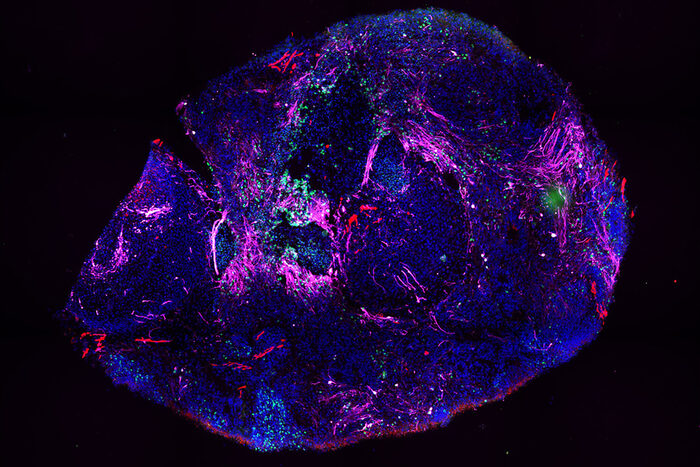|
Landeshauptstadt Dresden - www.dresden.de https://www.dresden.de/en/business/tomorrow-s-home/news/2024/018-dzne-sma.php 09.08.2024 10:41:38 Uhr 22.04.2025 10:05:43 Uhr |
|
New treatment options for rare nerve disease SMA

Researchers at the DZNE and the Technische Universität Dresden are on the trail of new methods for the treatment of spinal muscular atrophy (SMA). In order to better understand this rare nerve disease, previously unrecognised abnormalities in embryonic development were observed using laboratory-grown tissue cultures.
Paralysis and muscle atrophy are the two predominant symptoms of spinal muscular atrophy after nerve cells in the spinal cord are damaged. This is all linked to a genetic defect caused by SMA and the resulting protein underproduction. However, the nerve cells urgently need the "survival of motor neuron proteins" in order to fulfill their function of controlling movement. Although a gene therapy that has been trialed for a few years can provide relief, it does not yet provide a complete cure.
In order to be able to treat the nerve disease more effectively in future, researchers at the German Centre for Neurodegenerative Diseases (DZNE) and the Technical University of Dresden (TUD) are focusing on the embryonic stage. This is because, it is assumed, malformations already occur during the development of the nervous system. Accordingly, new therapeutic approaches could build on this and be used much earlier than before.
The research team cultivated so-called organoids in the laboratory in order to be able to access sufficient tissue samples for possible study work. These are tissue samples the size of a grain of rice with all the essential characteristics of spinal cord and muscle tissue. This enabled the team to take a close look at various stages: "The earliest phase that we can reproduce with our organoid model corresponds to that of a human embryo at the age of a few weeks," explains Dr Natalia Rodríguez-Muela, research group leader at the DZNE Dresden site and the Centre for Regenerative Therapies Dresden (CRTD) at the Technical University of Dresden.
The key finding of the tissue analyses: Disturbed gene regulation in the embryonic stage could be the trigger for the nerve disease and therefore become the focus for new treatment methods. These would then be applied during early pregnancy. Further research is still being carried out to verify these findings. So there is new hope for all those affected – around 1,500 people in Germany, most of whom suffer from SMA from childhood onwards.
More information






